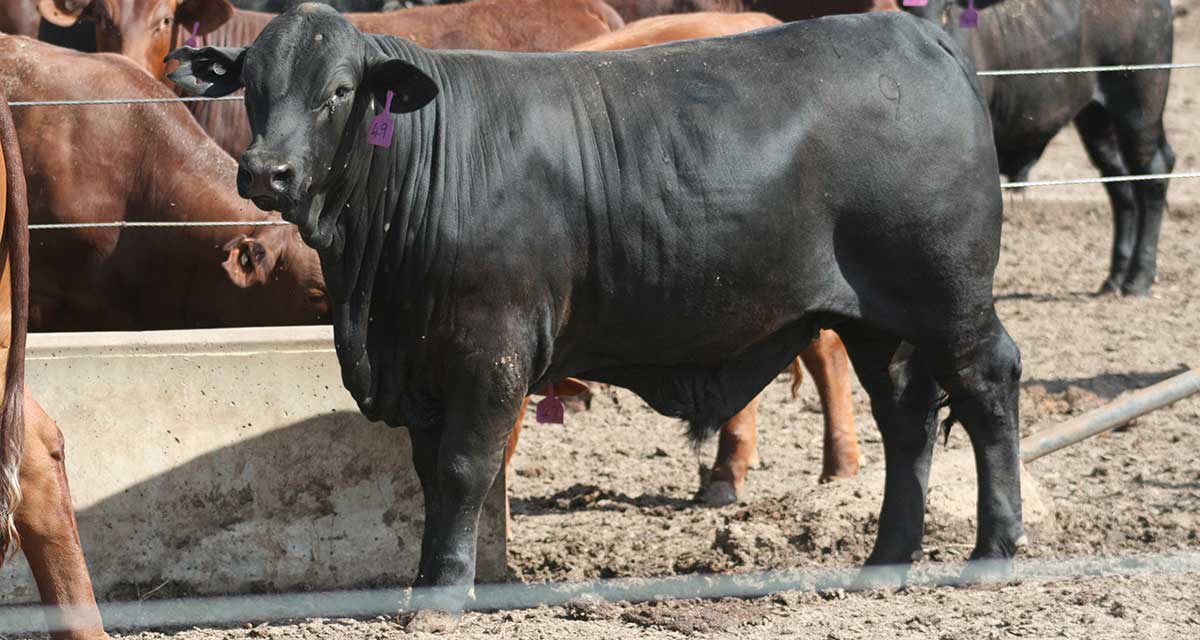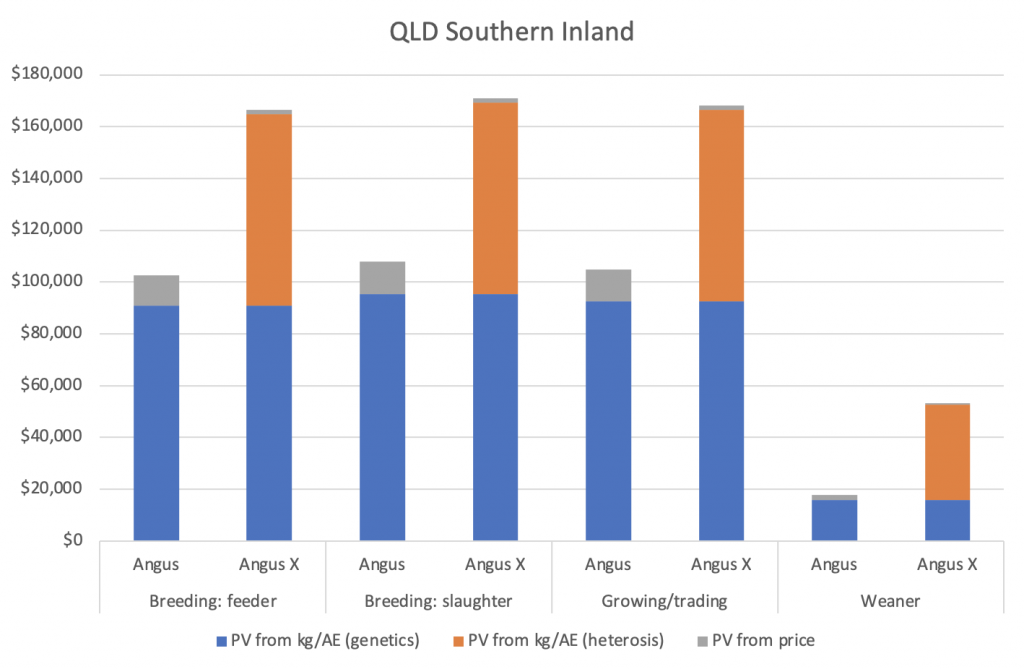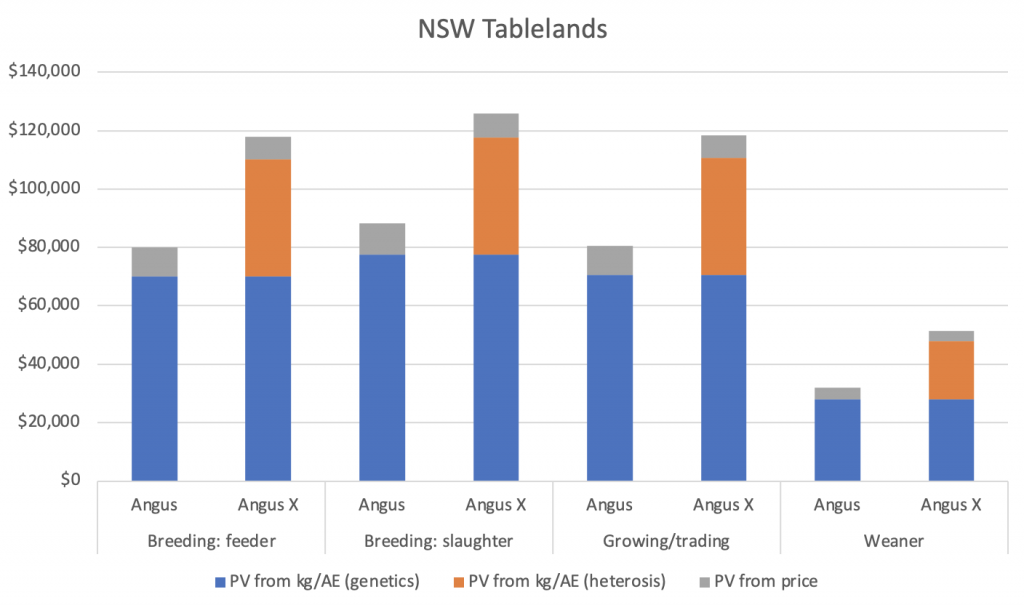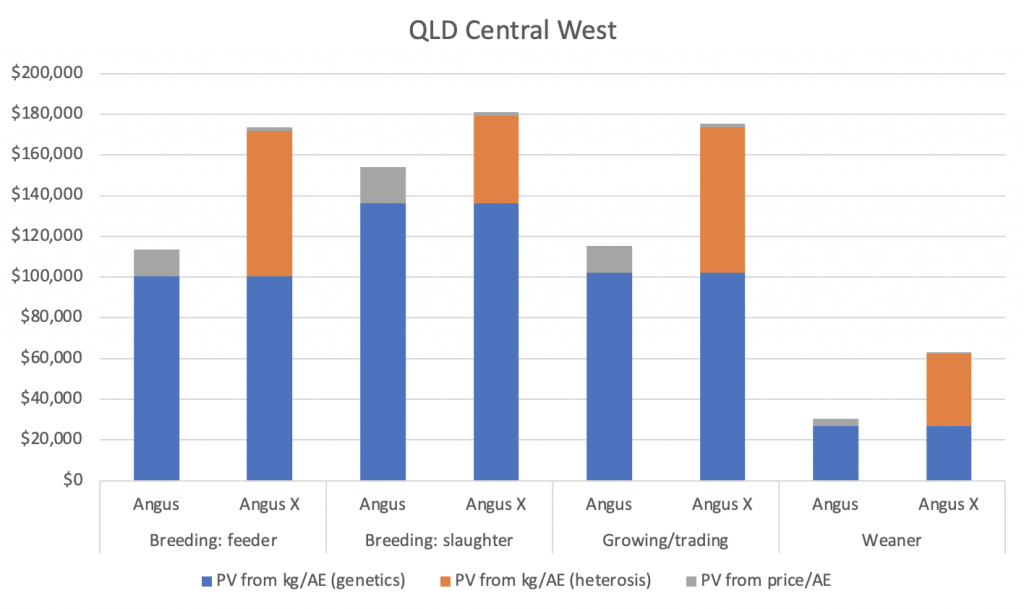Genetic Improvement, Hybrid Vigour and Premiums – The Profitable Combination


By incorporating Angus genetics into their operations, commercial producers can benefit from the significant genetic progress being made by the Angus breed and the market premiums they receive.
This in turn significantly improves the profitability of businesses in some of Australia’s largest and most productive beef producing regions. It also identifies the greater potential for use of Angus genetics in both straight and cross breeding scenarios, particularly in Queensland.
These are the findings of the report “Profiting from Angus Genetics in Commercial Herds” by Bush Agribusiness, released this week. Angus Australia engaged Bush Agribusiness to model the impact of introducing Angus genetics into real business performance data across Queensland and New South Wales, using their extensive benchmarking data.
The modelling conducted by Bush Agribusiness simulated the use of Angus genetics in 24 different scenarios throughout Queensland’s Central West and Southern Inland, as well as the NSW Tablelands. The scenarios included both straight bred and cross bred breeding programs and modelled breeding enterprises targeting the weaner, feeder and slaughter markets, as well as trading operations and tracked the changes in profitability over a 10-year period.
In all the scenarios analysed, the use of Angus genetics resulted in a greater net benefit when compared to the expected average performance of a business in that area, as derived from Australian Beef Report benchmarking data.
The biggest increases in profit stood to be gained by the Queensland’s Central West in both straight Angus and cross bred scenarios. Trading operations and breeding operations targeting the feeder and slaughter markets utilising Angus genetics in this area were found to return a minimum increase in profit of $116,000 (net present value) over a ten-year horizon.
Genetic Improvement Packs the Most Profitable Punch
The value of genetic progress is often overlooked, as market premiums are much more easily quantified. Through the modelling conducted by Bush Agribusiness, the impact of associated premiums for Angus cattle, as well as the production gains arising from genetic improvement were analysed and quantified.
Genetic improvement, particularly for traits that improved key economic drivers such as weaning rate, sale weight and reduced mortality rate, had significantly greater impact on farm profitability – far outweighing any market premium received.
Illustrated in the graphs below is the modelled change in profit over a ten-year period for the four scenarios analysed for each region and the breakdown of where that profit is derived from – genetic gain (blue), hybrid vigour (orange) and market premiums (grey).



This increase in profitability arising from genetic improvement was most evident in operations taking animals from breeding through to backgrounding and slaughter, as well as growing and trading operations. These operations benefit from the genetic improvement made in traits that are expressed as the animal matures, such as growth rate. Meanwhile, due to the quicker turnover of animals in weaner production, the enterprise doesn’t have as much opportunity to financially benefit from the genetic improvement made, particularly in growth and carcase traits, and therefore only made smaller increases in profit.
The modelling conducted used the average genetic progress being made each year by Angus Australia Member herds, known as ‘breed average’. This suggests that the profits derived from selecting breed average animals could be enhanced further by selecting above breed average animals and applying selection criteria tailored to a particular business, it’s profit drivers and regional environment.
The impact of hybrid vigour was also quantified, and it further demonstrated the opportunity to utilise Angus genetics in Northern regions in cross breeding scenarios. Through cross breeding, producers are able to leverage and benefit from the genetic improvement gains being made in the Angus breed each year, while also benefiting from hybrid vigour. All crossbreeding scenarios were appreciably more profitable than straight bred scenarios as the production benefits of hybrid vigour had significant impact. The financial impact of hybrid vigour was particularly evident in Southern Inland Queensland.
Market premiums were the cream-on-top in terms of impact on profitability and were considerably greater for straight Angus cattle – with marginal premiums also evident for Angus-Bos indicus animals. Market premiums contributed the greatest amount to profitability in operations targeting the slaughter market in all scenarios.
CLICK HERE to access the full report entitled “Profiting from Angus Genetics in Commercial Herds” please visit the Angus Australia website. For more information, please contact staff at Angus Australia.